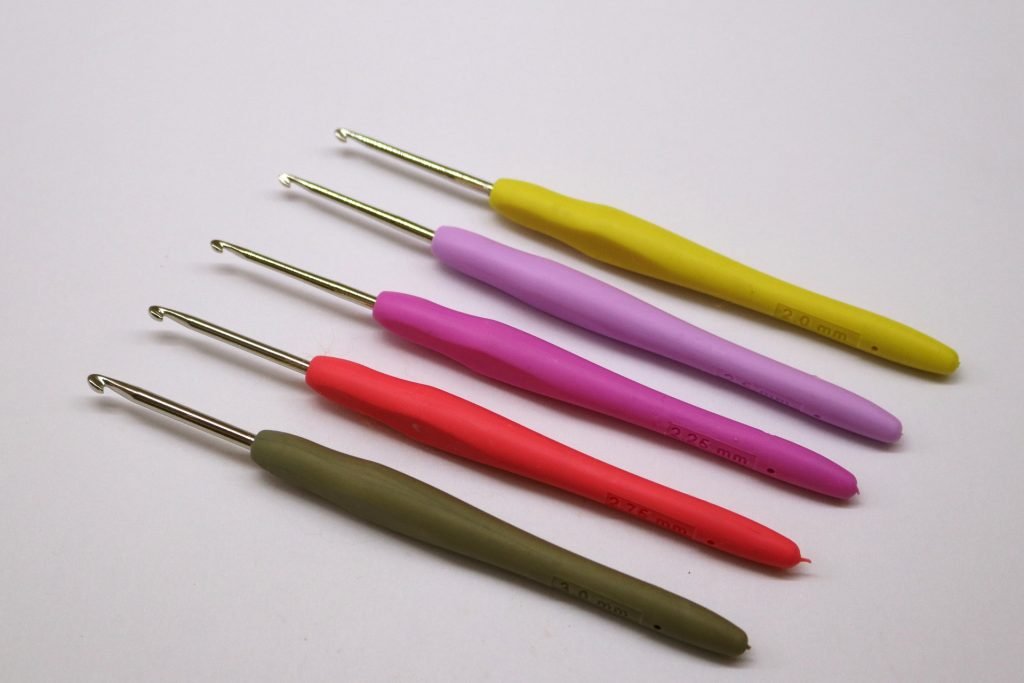Getting Hooked – A Guide to Crochet Hooks
Crochet hooks, it sounds pretty simple, right? It’s a metal hook you use with yarn to make stuff. Easy peasy! But what if I told you that there is more to it than just having a hook? I mean, sure, it isn’t rocket science, you don’t need a degree or ID to buy a crochet hook, but you do need to put a little bit more thought into your hooks than you may think.
Size Matters – No, Really!
The most important thing you need to pay attention to when getting a new hook is the size. The sizes range from really tiny, for thread, to really large, for very thick yarns. It’s really important to make sure you’re getting the correct size hook for your yarn. Using a large hook with thread will create a messy fabric that is too loose to work with, and using a tiny hook with thick yarns can cause your yarn to split, as well as create too tight a fabric. It’s important to make sure that you are using the proper hook for the yarn and project that you are creating. Your yarn label should point you in the right direction. The hook size is typically located on the back of the label.
There are times when a pattern will call out for a larger or smaller hook than the yarn label calls for. If this is the case, you should follow the pattern, as there is usually a reason the designer calls for a different size hook. This is very common in amigurumi. Usually designers will use a smaller hook to create a tighter fabric. This helps with keeping the polyfil from being seen when you stuff your toy.
Specialty Crochet Hooks
There are also styles of hooks that you can buy. Staying with standard crochet, you will be able to find hooks made of aluminum, which is the standard crochet hook, as well as plastic and wood.
There are also ergonomic crochet hooks. These are hooks with a wider handle on them, which can help keep your hands from getting sore when you work. Ergonomic hooks come in many styles. You can find them with rubber handles, wooden handles, or even polymer clay handles. Some are made by using an aluminum hook and creating a handle for them, while others are one molded plastics or wood.
You can even make your own ergonomic hooks by putting them through a round piece of cork, or by molding a handle around them with polymer clay.
Some people also use lighted crochet hooks. These come in handy when working in darker yarns, such as black, brown or burgundy. The light makes it easier to see where you should be placing your hook.
Beyond your standard crochet, they also sell Tunisian Crochet Hooks. Tunisian Crochet is sort of a blend between crochet and knitting, and the hooks for Tunisian Crochet look like a combination of a crochet hook and a knitting needle. There are two types of Tunisian Crochet Hooks. Some are simply extra long hooks, usually about 10”-12” long, while others are long hooks with a string and a stopper attached to them. The long hooks with a string are used for larger Tunisian Crochet projects, such as blankets or clothing.
Whatever your project or preference is, pick up a hook and get hooking, today!









